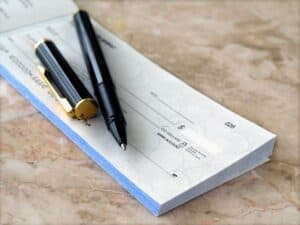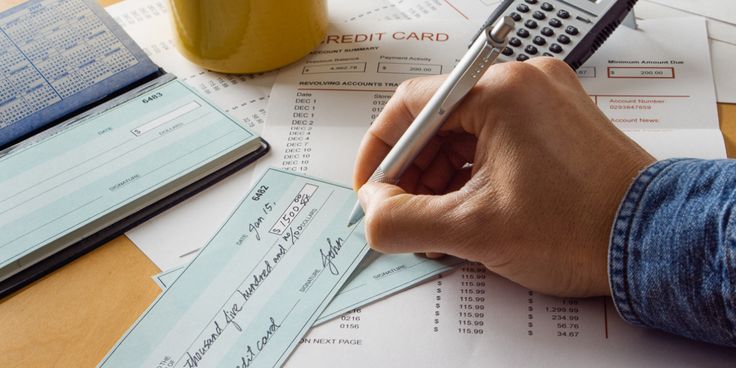Writing a check may seem like an outdated practice in today’s digital world. However, it is still an essential skill to have. Whether you need to pay rent, and utilities, or make a donation, knowing how to write a check is a valuable life skill that you will use throughout your life. In this article, we will guide you through the process of writing a check step-by-step so that you can confidently write a check whenever you need to.
To write a check, you will need to have a checking account with a bank or credit union. Once you have a checking account, you will need to have a checkbook, which contains pre-printed checks with your account information. Writing a check involves filling out several fields, including the date, payee, amount, and signature. While it may seem overwhelming at first, with practice, writing a check will become second nature to you.
In this article, we will cover everything you need to know about writing a check. We will provide you with a step-by-step guide, including tips on how to avoid common mistakes. Additionally, we will share some important information about check fraud and how to protect yourself from it. By the end of this article, you will have all the knowledge you need to confidently write a check and use it as a secure and convenient payment method.
Essentials of Writing a Check
When it comes to writing a check, there are a few essential elements that you need to include to ensure that it is processed correctly. In this section, we’ll go over each of these elements in detail to help you understand what you need to do.
Date Line
The first thing you need to do when writing a check is to fill in the date line. This is located at the top right-hand corner of the check. You should write the date in the format of Month/Day/Year. For example, if today is April 8th, 2024, you would write 04/08/2024.
Payee Line
The next element you need to fill in is the payee line. This is where you write the name of the person or business you are paying. Make sure to spell the name correctly and use the full legal name of the payee. If you are not sure of the correct name, you can always ask the person or business for clarification.
Amount Box
The amount box is located on the right-hand side of the check, just below the payee line. This is where you write the amount of the check-in numbers. Make sure to write the amount clearly and legibly. If you make a mistake, you should void the check and start over with a new one.
Amount Line
The amount line is located below the payee line and is where you write the amount of the check in words. This is an important step, as it helps to prevent fraud and ensures that the correct amount is paid. Make sure to write the amount in full, using both dollars and cents. For example, if you are writing a check for $100.50, you would write “One Hundred and 50/100.”
Memo Line
The memo line is located at the bottom left-hand corner of the check. This is an optional field, but it can be helpful to include a note about what the check is for. For example, if you are paying a bill, you could write “Electric Bill” in the memo line. This can help you keep track of your expenses and ensure that the payment is applied correctly.
By following these essential steps, you can ensure that your check is processed correctly and that the correct amount is paid to the right person or business. Remember to double-check your work before submitting the check, and always keep a record of your payments for your own records.
Signing Your Check
When writing a check, it is important to sign it properly to ensure that it is valid and can be cashed. Here are a few things to keep in mind when signing your check:
Signature Line
The signature line is located at the bottom right-hand corner of the check. This is where you will need to sign your name to authorize the payment. Make sure that you sign your name exactly as it appears on the front of the check. If you have a signature on file with your bank, make sure that you use that same signature when signing your check.
Check Number
It is important to write the check number in the designated space in the top right-hand corner of the check. This number is used to keep track of the checks that you write and to help prevent fraud. Make sure that you write the check number clearly so that it can be easily read.
Remember, your signature is what makes the check valid, so make sure that you sign it properly. If you make a mistake while signing your check, do not try to correct it. Instead, void the check and start over with a new one. By following these simple steps, you can ensure that your check is properly signed and can be cashed without any issues.
Record Keeping
Keeping accurate records of your check transactions is important for balancing your checkbook and monitoring your spending. Here are two ways to keep track of your checks:
Transaction Register
A transaction register is a record of all the checks you have written and other transactions made on your account. You can get a transaction register from your bank or use a checkbook with a built-in register. Use the register to record the date, payee, amount, and purpose of each check you write. You can also record deposits, ATM withdrawals, and other transactions.
Keeping a transaction register up to date will help you avoid overdrafts and keep track of your account balance. It’s important to reconcile your transaction register with your monthly bank statement to make sure there are no errors or unauthorized transactions.
Carbon Copy
Some checkbooks come with carbon copy paper attached to each check. When you write a check, the carbon copy creates a duplicate of the check with all the information you wrote. This can be a helpful record of your transactions, especially if you don’t have a transaction register.
To use the carbon copy, simply write your check as you normally would. The carbon copy will automatically create a duplicate of the check. Tear off the carbon copy and file it away for your records. You can also use the carbon copy to double-check that you wrote the check correctly.
Remember to keep your transaction register or carbon copies in a safe place where you can find them when you need them. By keeping accurate records of your check transactions, you can stay on top of your finances and avoid any surprises.
Security Tips

When writing a check, it’s important to take steps to protect your personal and financial information. Here are a few security tips to keep in mind:
Avoid Blank Checks
Never leave a blank space on your check. This can leave you vulnerable to fraud, as someone could potentially fill in the blank space with a larger amount than you intended to pay. Always fill in the recipient, amount, and memo line before signing the check.
Consistent Signature
Sign your checks with a consistent signature. This will help prevent fraud and ensure that your bank can verify that it’s really you who signed the check. If you need to update your signature, contact your bank to make the change.
Review Bank Statements
Review your bank statements regularly to make sure there are no unauthorized transactions. If you notice any suspicious activity, contact your bank immediately. It’s also a good idea to keep your checkbook in a secure location to prevent unauthorized access.
By following these security tips, you can help protect yourself from fraud and ensure that your financial information stays safe.
Common Mistakes to Avoid

Writing a check might seem like an outdated practice in today’s digital world, but it is still an essential skill to have. However, even the most experienced check writers can make mistakes that can result in costly errors. Here are some common mistakes to avoid when writing a check:
1. Incorrect Date
The date is an essential part of a check and must be accurate. If the date is incorrect, the check may not be valid, and the recipient may not be able to cash it. Always double-check the date before writing the check.
2. Wrong Amount
Writing the wrong amount on a check can lead to confusion and errors. It is crucial to write the amount in both words and numbers and ensure they match. If there is a discrepancy between the two, the bank may not honor the check.
3. Signature Missing
A check without a signature is invalid and cannot be cashed. Always remember to sign the check before handing it over to the recipient.
4. Incorrect Payee Name
Ensure that the name of the payee is spelled correctly and matches the name on the recipient’s ID. If there is a mismatch, the bank may not honor the check.
5. Overwriting or Altering Information
Do not overwrite or alter any information on the check. If you make a mistake, cancel the check and start over. Overwriting or altering information can lead to confusion and errors.
6. Using the Wrong Check
Using the wrong check can lead to confusion and errors. Always ensure that you are using the correct check for the correct account.
By avoiding these common mistakes, you can ensure that your checks are valid and that your transactions go smoothly.
Here is a simple video to guide you on how to write a check.
conclusion
In a world increasingly dominated by digital transactions, the art of writing a check may seem like a relic of the past. Yet, mastering this skill is not only a practical necessity but also a symbol of financial empowerment and responsibility. As I reflect on the step-by-step guide provided, I am reminded of the countless times when knowing how to write a check has proven invaluable in my life.
From paying bills to making charitable contributions, each stroke of the pen carries a sense of purpose and accountability. Ensuring accuracy in every detail, from the date to the payee’s name, becomes more than just a procedural task—it becomes a commitment to precision and integrity.
Moreover, the act of signing a check is more than just a formality; it’s a personal endorsement of the transaction, a tangible mark of trust between payer and payee. With each signature, I affirm not only the financial aspect but also the relationship and mutual understanding it represents.
As I conclude this journey through the intricacies of check writing, I am reminded of the importance of diligence and vigilance in financial matters. Whether it’s keeping meticulous records or safeguarding against fraud, every precaution taken serves as a safeguard for financial well-being.
So, let us embrace this timeless practice with confidence and diligence, knowing that in a world of rapid change, some traditions endure as timeless symbols of responsibility and trust.





